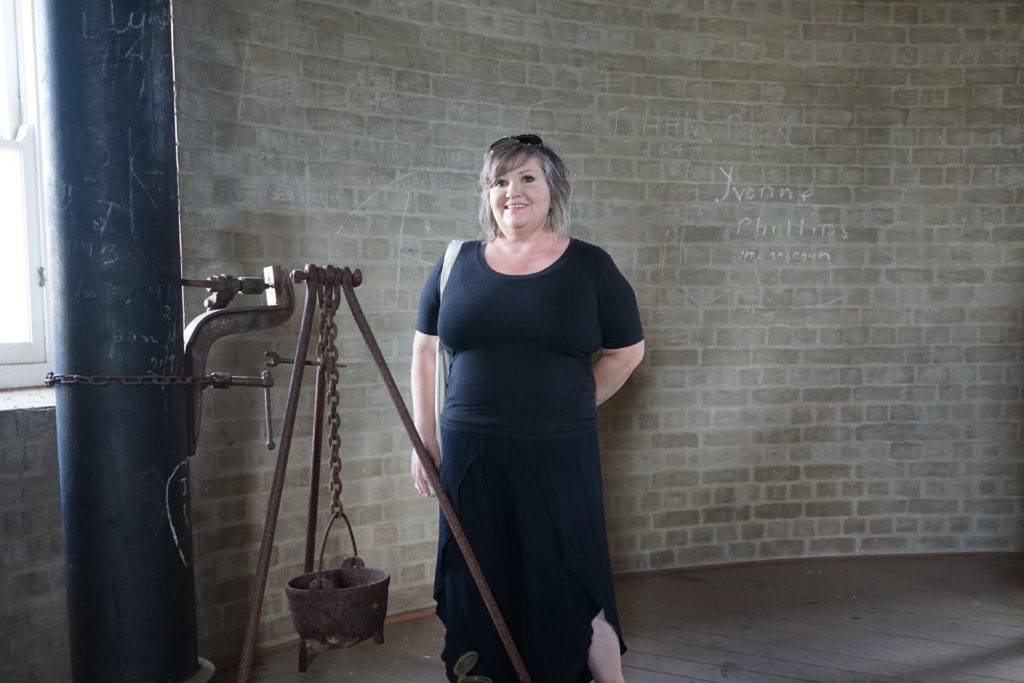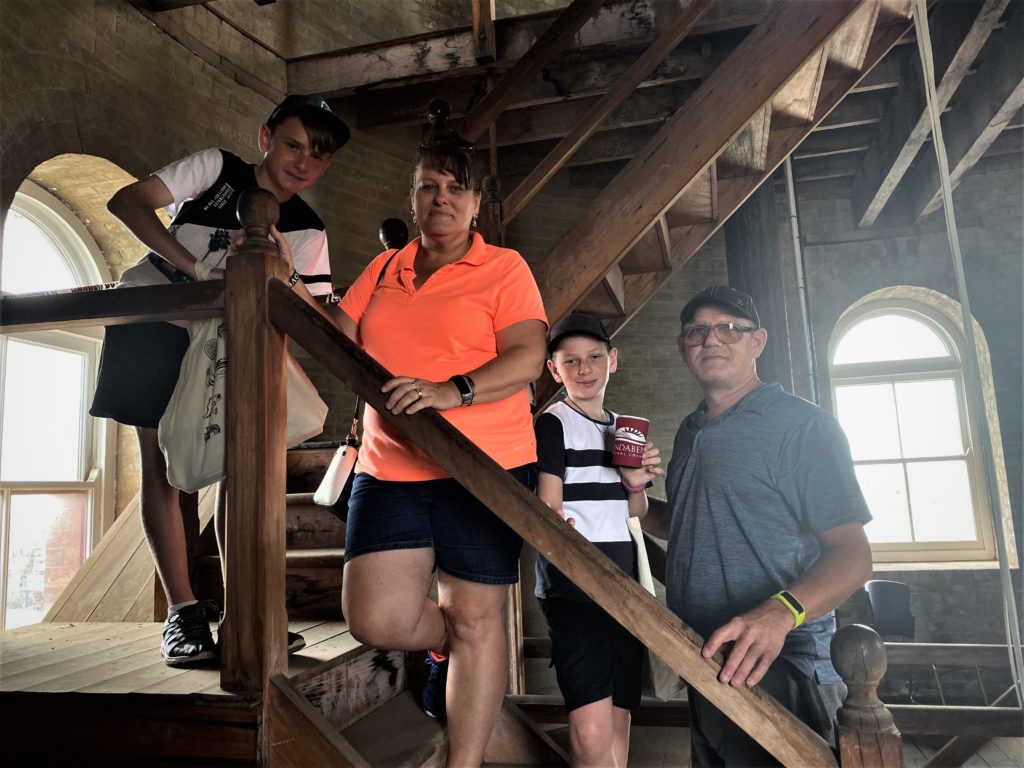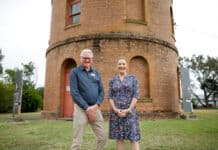
More than 160 Bundaberg residents had the rare chance to take in a rich part of local history when they toured the East Water Tower as part of National Water Week.
Eager history buffs were ready to take in the sights of the tower, usually only opened to the public one day a year for the Open House event.
The tower was commissioned on 19 September 1902 by Queensland Government hydraulic engineer JB Henderson.
Bundaberg State High School history and geography teacher Krissie Arnold said the tour was right up her alley and said she would now be able to pass on the history to her students and future generations.
“It was amazing. I loved the historical value of it, and to be able to get the information and pass it on to the younger generation is wonderful,” Mrs Arnold said.
“I know a little about the tower, but I didn’t realise there were so many signatures inside on the walls, that was a surprise, and I saw one signature dated the year it was made in 1902.”

Taking in the history of East Water Tower
Living in the Bundaberg Region for three decades, Mrs Arnold said it was the first time she had ventured inside the East Water Tower.
With it being one of the main water sources of its time and the original water tower for the region, she felt privileged to walk up the eight levels and take in the history of Bundaberg.
“It’s extremely important to collect the history of our town so that young people today know the historical value of where they come from,” she said.
“I feel the history can become lost and it’s vital to make sure we pass it on.”
The building provided Bundaberg’s first reticulated water supply and was originally known as the Bundaberg Waterworks.
It wasn’t just the history of the building that captured Mrs Arnold’s attention, as Council’s Water Services team volunteered their time to give tours and presented the groups with information on how water was historically used.
“It was really interesting looking at the pipe work itself and seeing which ways the water entered and exited, just the structure of the whole tower was really interesting too,” Mrs Arnold said.

East Water Tower captures young minds
The imposing structure, which is now a hallmark of the Bundaberg city skyline, comprised a 40,000 gallon steel tank on top of an 8.8-metre diameter, 32-metre high cylindrical brick tower.
Combined with the 182 kilolitre capacity steel tank the tower has a total height of 35.5 metres.
The heritage listed East Water Tower has kept its internal history alive with solid wood stairs that turn all the way to seventh floor, glass pane arched windows and the floor is lined with a sediment of dust that helps show the decades of hard work of the older generations.
Reaching the top floor, the steel water tank is the centre of everyone’s attention, as the tour guide explained the water tank was fully-riveted with zero welds to help hold in the water.
Joining one of the tours was six-year-old Archie Hutchinson who was enticed by the engineering of the structure, and as a lover of mathematics he counted every step he took.
“There were 140 steps on the way up and 140 on the way down, so 280 altogether,” Archie said with pride.
Lucky winners grateful for opportunity
Andy Von Sonnenschein was lucky enough to win tickets to the East Water Tower tour and said it was a great way to celebrate National Water Week.
He won the tickets after sharing how he conserves water by pumping from his washing machine to the garden.
“We used to do it when we lived out on the farm, when it’s really dry the water from the washing machine gets the lawn going, nice and green,” Andy said.
“We ended up putting in a diversion so instead of the water going into the grey water it now goes out onto the lawn.”
Andy said he had watched the virtual tour of the East Water Tower a number of times, but it was a lot different seeing it in real life and he was grateful for the opportunity.







